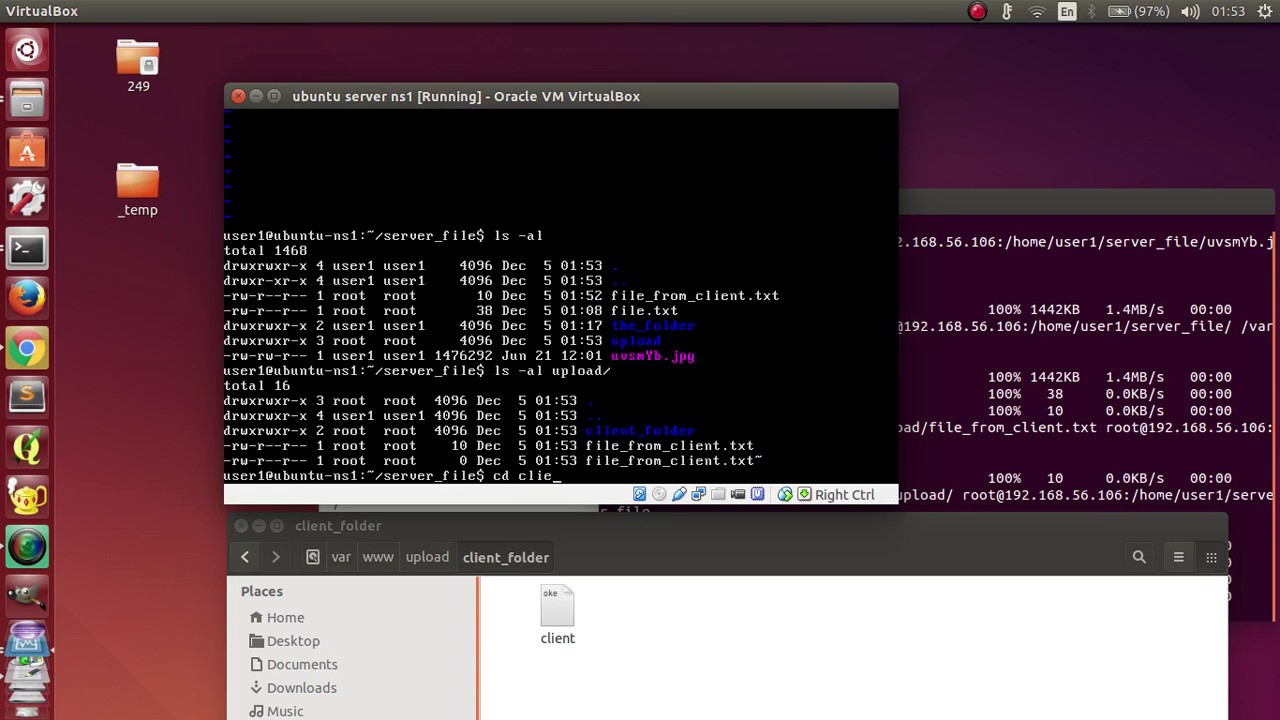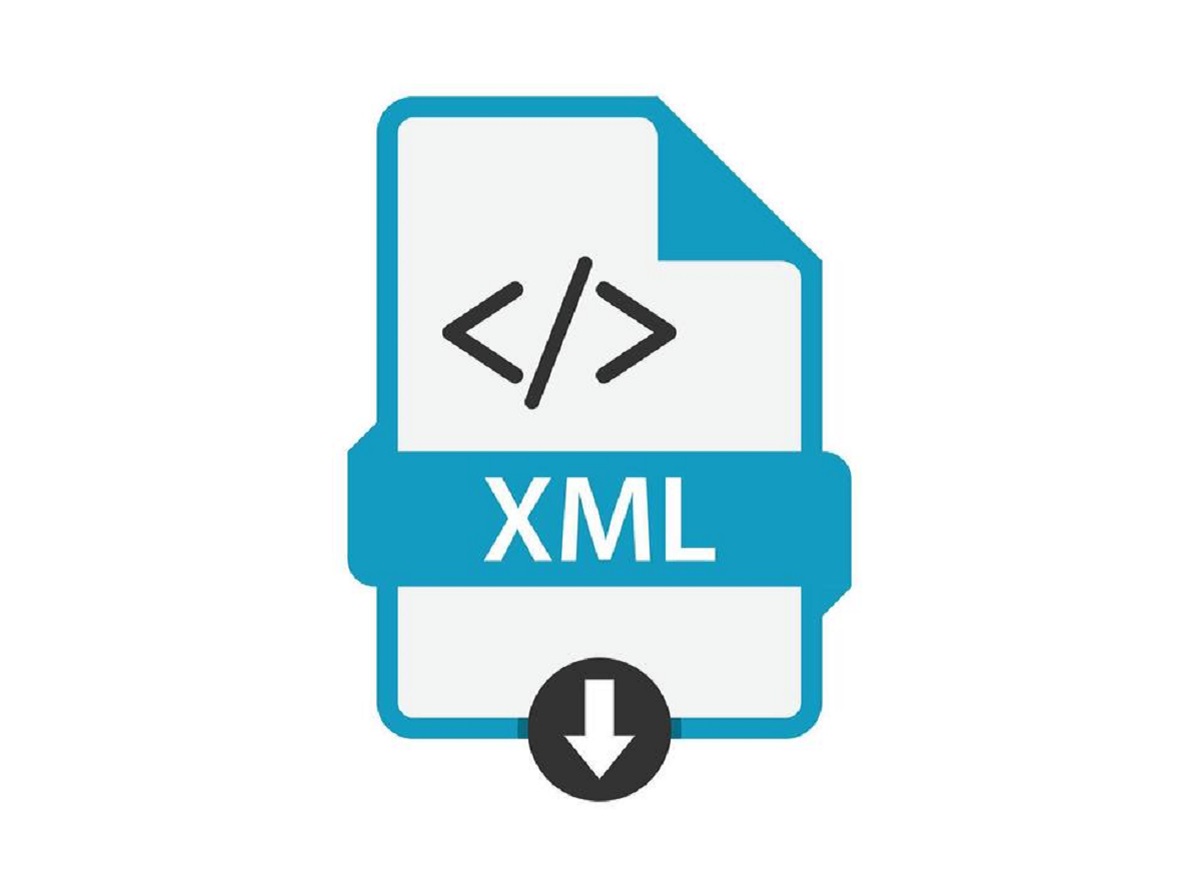Introduction
Welcome to the world of wget, a powerful command-line tool for downloading files from the internet. Whether you need to download a single file or an entire website, wget provides a simple and efficient way to get the job done. In this article, we will explore the various capabilities of wget and learn how to use it effectively for all your downloading needs.
Wget is a free utility that is widely used in the Unix and Linux community. However, it is also available for Windows and Mac systems, making it accessible to a wide range of users. Unlike other graphical download managers, wget operates purely from the command line, which makes it lightweight and flexible.
One of the main advantages of using wget is its ability to handle complex downloads, such as recursive downloads of entire websites or downloading files with specific patterns. It also supports resuming downloads, allowing you to pick up where you left off if a download gets interrupted.
In this article, we will guide you through the process of installing wget and teach you how to use its basic commands. We will also delve into advanced features, such as downloading files with authentication and setting time delays between requests. Along the way, we’ll provide examples and practical tips to help you become proficient in using wget.
Whether you are a web developer, system administrator, or simply someone who needs to download files from the internet, understanding and mastering wget can greatly simplify and optimize your downloading workflow. So, let’s get started and unlock the full potential of wget!
What is wget?
Wget is a command-line utility that allows users to retrieve files from the internet. It stands for “Web Get” and is popular among users who prefer the power and flexibility of the command line over graphical user interfaces. With wget, you can download files, directories, and even entire websites with just a few simple commands.
One of the key advantages of wget is its simplicity. It doesn’t require any fancy configurations or installations. By default, it uses the HTTP, HTTPS, and FTP protocols to retrieve files, making it compatible with a wide range of web servers. It also includes features like resuming interrupted downloads, limiting bandwidth usage, and recursive downloading, which sets it apart from other download managers.
Wget is highly versatile and can be used for various purposes like website mirroring, data scraping, and file backups. For web developers, it is a powerful tool for retrieving resources needed for web projects, such as images, scripts, and CSS files, even from websites that may not offer a direct download option.
System administrators also find wget useful for automating tasks like periodic backups or downloading software packages for deployment. It can be easily integrated into shell scripts or used in combination with other command-line tools, making it a versatile tool for managing files and resources.
Wget also supports features like recursive downloading, which allows you to follow links and download files from a website’s nested directories. By combining this feature with options like depth limits and pattern matching, you can selectively download only the files you need.
Whether you are a seasoned developer, a sysadmin, or a casual user who needs to download files from the internet, wget is a valuable tool to have in your toolkit. Its simplicity, flexibility, and powerful features make it an ideal choice for various downloading tasks. In the following sections, we will explore the installation process of wget and delve into its commands to unleash its full potential.
Installing wget
The process of installing wget varies depending on the operating system you are using. In this section, we will provide instructions for installing wget on commonly used platforms.
Linux: If you are using a Linux distribution, chances are wget is already installed by default. You can verify this by opening a terminal and typing “wget” followed by the Enter key. If wget is not installed, you can install it using your distribution’s package manager. For example, on Ubuntu or Debian, you can use the following command:
sudo apt-get install wget
Mac: On macOS, you can install wget using the Homebrew package manager. Open a terminal and enter the following command to install Homebrew:
/bin/bash -c "$(curl -fsSL https://raw.githubusercontent.com/Homebrew/install/HEAD/install.sh)"
Once Homebrew is installed, you can use it to install wget:
brew install wget
Windows: On Windows, wget is not installed by default. However, you can easily install it by downloading the binary files from the GNU Wget website. Go to https://eternallybored.org/misc/wget/ and download the latest version of wget for Windows. Extract the downloaded file and add the folder to your system’s path to make wget accessible from the command line. You can now use wget in the Command Prompt or PowerShell.
Once wget is installed, you can start using it to download files from the internet. In the next section, we will explore some of the basic commands of wget to get you started.
Basic wget commands
Now that you have wget installed, let’s explore some of the basic commands to start downloading files from the internet. Wget operates from the command line, so open your terminal or command prompt to get started.
Downloading a file: To download a single file, use the following command:
wget [URL]
Replace [URL] with the actual URL of the file you want to download. Wget will retrieve the file and save it in the current directory.
Resuming an interrupted download: If a download gets interrupted, you can use the “-c” option to resume it. Simply re-run the same command used to initiate the download, and wget will check if the file is partially downloaded and continue from where it left off.
Limiting bandwidth usage: If you want to control the amount of bandwidth wget uses during downloads, you can use the “–limit-rate” option. For example, to limit the download speed to 1MB/s, use the following command:
wget --limit-rate=1m [URL]
Saving downloaded file with a different name: By default, wget saves the downloaded file with its original name. If you want to save it with a different name, you can use the “-O” option followed by the desired file name. For example:
wget -O mydownloadedfile.txt [URL]
Downloading multiple files: To download multiple files, specify multiple URLs separated by spaces. For example:
wget [URL1] [URL2] [URL3]
Downloading files in the background: By default, wget downloads files in the foreground, blocking the command line until the download is complete. If you want to run the download in the background and continue using the command line, use the “-b” option. For example:
wget -b [URL]
These are just a few of the basic commands to get you started with wget. As you become more familiar with wget, you’ll discover additional options and features that can further enhance your downloading experience. In the following sections, we’ll explore more advanced features of wget, including recursive downloads and downloading files from specific websites.
Downloading a single file
One of the most common use cases for wget is downloading a single file from the internet. Whether it’s a document, an image, or a software package, wget makes it easy to retrieve files quickly and efficiently.
To download a single file using wget, you simply need to specify the URL of the file as the argument. For example:
wget [URL]
Replace [URL] with the actual URL of the file you want to download. Wget will then initiate the download and save the file in the current directory.
During the download process, wget provides progress information, including the download speed, the size of the file, and the remaining time. This can be helpful, especially for larger files or slower internet connections.
By default, wget saves the downloaded file with its original name. If you want to save it with a different name, you can use the “-O” option followed by the desired file name. For example:
wget -O mydownloadedfile.txt [URL]
This command will save the downloaded file as “mydownloadedfile.txt” in the current directory.
If a download gets interrupted or you need to resume a partially downloaded file, wget has got you covered. By simply re-running the same wget command used to initiate the download, wget will check if the file is partially downloaded and resume from where it left off. This can be a lifesaver, especially for large files or unstable internet connections.
Downloading a single file with wget is a straightforward process. Whether you need to retrieve a document for work or download an image for personal use, wget provides a reliable and efficient method to get the job done quickly. In the next section, we will explore how to download multiple files using wget.
Downloading multiple files
Downloading multiple files from the internet can be time-consuming if done manually. Luckily, wget provides a simple solution for downloading multiple files at once, saving you valuable time and effort.
To download multiple files using wget, you can specify multiple URLs separated by spaces as arguments. For example:
wget [URL1] [URL2] [URL3]
Replace [URL1], [URL2], [URL3] with the actual URLs of the files you want to download. Wget will initiate the downloads in parallel, fetching each file one by one.
During the download process, wget will display progress information for each file, including the download speed, file size, and remaining time. This can be particularly useful when downloading multiple large files, as you can track the progress of each download individually.
If you want to save the downloaded files with specific names, you can use the “-O” option followed by the desired file names. For example:
wget -O file1.txt [URL1] -O file2.txt [URL2] -O file3.txt [URL3]
This command will save each downloaded file with the specified name, allowing you to organize and identify them easily.
Downloading multiple files with wget not only saves time but also ensures that all the files are retrieved accurately and efficiently. Whether you need to download a collection of images, documents, or other files, wget simplifies the process by automating the downloads and providing progress updates. In the next section, we will explore how to download files using a pattern with wget.
Downloading files using a pattern
Wget offers a powerful feature that allows you to download files using a pattern. This comes in handy when you need to download multiple files that follow a specific naming convention or have similar URLs.
To download files using a pattern with wget, you can utilize the power of wildcard characters. The most commonly used wildcard characters are:
- *: Matches any sequence of characters.
- ?: Matches any single character.
- []: Matches any single character within the specified range.
For example, let’s say you want to download a series of images with filenames like “image001.jpg”, “image002.jpg”, and so on. You can use the “*” wildcard to download all the images with a single command:
wget "http://example.com/images/image*.jpg"
This command will download all the files that match the pattern “image*.jpg” from the specified URL. Wget will replace the “*” wildcard with any sequence of characters, allowing you to fetch multiple files that match the pattern.
You can also use the “?” wildcard to match a single character. For example, to download files with a range of names like “file1.txt”, “file2.txt”, and so on, you can use the “?” wildcard:
wget "http://example.com/files/file?.txt"
Similarly, you can use the “[]” wildcard to match a specific range of characters within a pattern. For instance, to download files with names like “fileA.txt”, “fileB.txt”, or “fileC.txt”, you can use the following command:
wget "http://example.com/files/file[A-C].txt"
By using these wildcard characters, you can easily download multiple files that follow a specific pattern or naming convention. It provides a convenient way to automate the process and save time and effort. In the next section, we will explore how to download files recursively with wget.
Downloading files recursively
Wget’s recursive downloading feature allows you to download files and directories in a nested structure, known as “downloading recursively.” This is particularly useful when you need to mirror an entire website or download files from subdirectories.
To initiate a recursive download with wget, use the “-r” option followed by the URL. For example:
wget -r [URL]
Wget will analyze the specified URL and retrieve all files and directories linked within that URL. It will then follow each link and download the files recursively, maintaining the directory structure of the source website.
During the recursive download, wget will display detailed information about the files being downloaded, including the progress and download speed. This allows you to monitor the downloading process and track the status of each file.
By default, wget downloads all files it encounters, including HTML pages, images, CSS files, and more. However, you can use additional options to limit the types of files to download. For instance, if you only want to download images, you can use the “–accept” option to specify the file types. For example:
wget -r --accept=jpg,jpeg,png,gif [URL]
This command will only download files with extensions .jpg, .jpeg, .png, and .gif, filtering out other file types during the recursive download process.
Using the recursive download feature, you can create local mirrors of websites, download files from nested directories, or retrieve specific file types in bulk. This can be useful for offline browsing, website backups, or data archival purposes.
Now that you understand how to download files recursively with wget, let’s explore how to download files specifically from a particular website in the next section.
Downloading files from a specific website
When you want to download files specifically from a particular website, wget provides options to limit the download to only the resources hosted on that website. This can be useful in scenarios where you need to retrieve all files or certain types of files from a specific domain.
To download files from a specific website using wget, you can use the “–domains” and “–no-parent” options. For example:
wget --domains example.com --no-parent -r [URL]
Replace [URL] with the URL of the website you want to download files from. Wget will limit the downloads to files within the specified domain and prevent it from following links to parent directories.
Using the “–domains” option ensures that wget only retrieves files from the specified domain and avoids downloading resources from other websites that may be linked within the page.
The “–no-parent” option prevents wget from following links to parent directories, which is useful if you only want to download files from a specific directory or subdirectory of a website.
During the download, wget will maintain the directory structure of the website, preserving the relative paths of the files within the downloaded directories.
In addition to limiting the download to a specific website, you can also use other options like “–accept” to specify the types of files to download, as mentioned in the previous section on recursive downloading.
Downloading files from a specific website with wget allows you to collect resources from a website efficiently, without downloading unrelated files or traversing to external domains. This can be beneficial for tasks such as archiving a specific website or collecting files for offline access. In the next section, we will explore how to download files with authentication using wget.
Downloading files with authentication
There are instances when you might need to download files from a website that requires authentication, such as a username and password. With wget, you can easily download files that are protected by authentication, making it a convenient and reliable tool for accessing secure resources.
To download files with authentication using wget, you can use the “–user” and “–password” options to provide your login credentials. For example:
wget --user=username --password=password [URL]
Replace “username” and “password” with your actual login credentials for the website. Wget will use these credentials to authenticate and download the specified file.
If the website uses a different form of authentication, such as HTTP-based or cookie-based authentication, you can still use wget. However, you might need to refer to the wget documentation or the website’s login process to determine the appropriate options or parameters to use.
It’s important to note that when using credentials in wget, they are passed through the command line, which poses a security risk as they can be visible in the command history or process listings. To mitigate this risk, consider using options like “-Q” or “–quiet” to suppress the command-line output or store your credentials in a separate file and reference it using the “–password-file” option.
Downloading files with authentication allows you to access and retrieve secure resources from websites without needing to manually log in through a browser. This feature is particularly useful when you need to automate the downloading process or download files from websites that don’t have a direct download option available to the public.
In the next section, we will explore how to introduce a time delay between requests when downloading files with wget.
Downloading files with a time delay
When downloading files from a website, it’s important to be mindful of the server’s load and adhere to any rate limiting restrictions they may have in place. Wget provides an option to introduce a time delay between requests, ensuring that your downloads are made in a controlled and respectful manner.
To add a time delay between requests when downloading files with wget, you can use the “–wait” option followed by the number of seconds to wait before each request. For example:
wget --wait=5 [URL]
In this example, wget will wait for 5 seconds between each request. This not only helps to maintain a reasonable load on the server you are downloading from but also prevents you from making an excessive number of requests in a short period of time.
Introducing a time delay between requests can be particularly useful when performing recursive downloads or downloading a large number of files from a website. It allows you to control the pace of your downloads and reduces the risk of triggering any rate limiting mechanisms set by the server.
Keep in mind that adding a time delay between requests may increase the overall time required to complete your downloads, especially if you have a large number of files to retrieve. However, it is a recommended practice to ensure smooth and responsible downloading.
By incorporating a time delay with wget, you can strike a balance between efficiently retrieving your desired files and respecting the limitations set by the server. This helps create a positive downloading experience, both for you and the server administrators.
In the next section, we will explore how to run wget in the background, allowing you to continue working while the downloads are in progress.
Downloading files in the background
Wget provides an option that allows you to run downloading tasks in the background, freeing up your terminal or command prompt for other tasks while downloads are in progress. This feature is particularly useful when you have multiple files to download or when the download process is expected to take a considerable amount of time.
To run wget in the background, you can use the “-b” or “–background” option followed by the URL or commands you want to execute. For example:
wget -b [URL]
With this command, wget will initiate the download process in the background, immediately freeing up your terminal or command prompt for other tasks. You will receive a message indicating the process ID (PID) of the background task.
By default, wget directs its output to a log file named “wget-log” in the current working directory. This log file contains the progress information and any error messages encountered during the download. You can use the “-o” or “–output-file” option to specify a different log file location, if needed.
It’s important to note that when running wget in the background, any output or error messages will not be displayed in the terminal or command prompt. Therefore, it’s a good practice to periodically check the log file to monitor the progress of your downloads.
To view the output in real-time, you can use the “tail” command to follow the log file. For example:
tail -f wget-log
This command will display the most recent content of the log file, allowing you to keep track of the download progress while working on other tasks.
Downloading files in the background with wget maximizes your productivity by freeing up the command line interface for other tasks. It allows you to initiate long-running downloads without needing to keep the terminal or command prompt open. Remember to check the log file periodically to monitor the progress and ensure successful downloads.
In the next section, we’ll summarize what we’ve learned and conclude our exploration of downloading with wget.
Conclusion
Wget is a powerful command-line tool for downloading files from the internet. Throughout this article, we have explored the various capabilities of wget and learned how to utilize it effectively for all our downloading needs.
We started by understanding what wget is and how it can be installed on different operating systems. We then delved into the basic wget commands, such as downloading a single file, resuming interrupted downloads, limiting bandwidth usage, and saving files with different names.
Furthermore, we explored more advanced features of wget, including downloading multiple files, downloading files using patterns, recursive downloading, downloading files from specific websites, authenticating to download protected files, introducing time delays between requests, and running wget in the background.
Wget proves to be a versatile tool that is widely used by web developers, system administrators, and users who need to download files from the internet. Its command-line interface and extensive options make it a powerful tool for automating tasks, downloading resources from websites, creating local mirrors, and much more.
By mastering wget, you can streamline and optimize your downloading workflow. Whether you need to retrieve individual files, directories, or entire websites, wget provides the tools you need to get the job done efficiently.
So, the next time you need to download files from the internet, consider using wget and take advantage of its robust feature set. With wget in your toolbox, you’ll have the power to effortlessly download files with ease and flexibility.

























